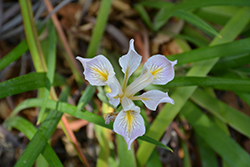It's all about ...
plants

Height: 18 inches
Spacing: 30 inches
Sunlight:
![]()
![]()
Hardiness Zone: 3a
Other Names: Western Blue Flag
Description:
This adaptable native variety forms dense, large clumps in average to wet areas; attractive lavender to sky blue blooms with gold signals over long, narrow blue-green foliage; great for beds, borders, coastal or alpine gardens
Ornamental Features
Rocky Mountain Iris features showy violet flag-like flowers with sky blue overtones and a gold blotch at the ends of the stems from mid to late spring. The flowers are excellent for cutting. Its narrow leaves remain bluish-green in colour with hints of grayish green throughout the season.
Landscape Attributes
Rocky Mountain Iris is an herbaceous perennial with an upright spreading habit of growth. Its relatively fine texture sets it apart from other garden plants with less refined foliage.
This plant will require occasional maintenance and upkeep, and should be cut back in late fall in preparation for winter. Deer don't particularly care for this plant and will usually leave it alone in favor of tastier treats. Gardeners should be aware of the following characteristic(s) that may warrant special consideration;
- Insects
Rocky Mountain Iris is recommended for the following landscape applications;
- Mass Planting
- Border Edging
- General Garden Use
- Naturalizing And Woodland Gardens
- Bog Gardens
Planting & Growing
Rocky Mountain Iris will grow to be about 16 inches tall at maturity, with a spread of 3 feet. When grown in masses or used as a bedding plant, individual plants should be spaced approximately 30 inches apart. It grows at a medium rate, and under ideal conditions can be expected to live for approximately 10 years. As an herbaceous perennial, this plant will usually die back to the crown each winter, and will regrow from the base each spring. Be careful not to disturb the crown in late winter when it may not be readily seen!
This plant does best in full sun to partial shade. It is quite adaptable, prefering to grow in average to wet conditions, and will even tolerate some standing water. This plant does not require much in the way of fertilizing once established. It is not particular as to soil pH, but grows best in clay soils. It is highly tolerant of urban pollution and will even thrive in inner city environments. This species is native to parts of North America. It can be propagated by division.
